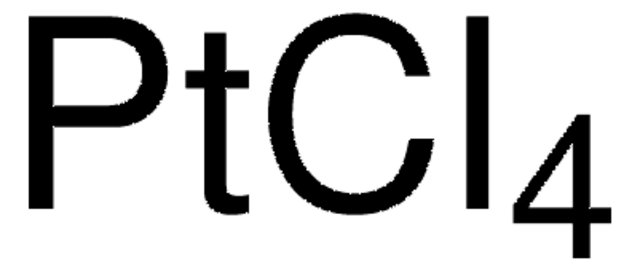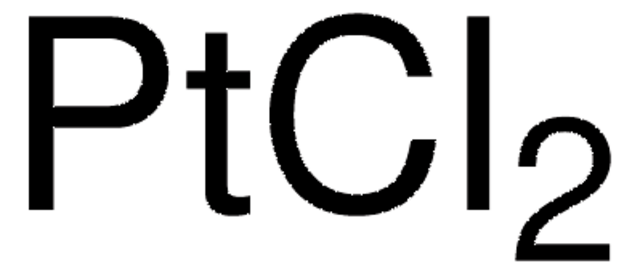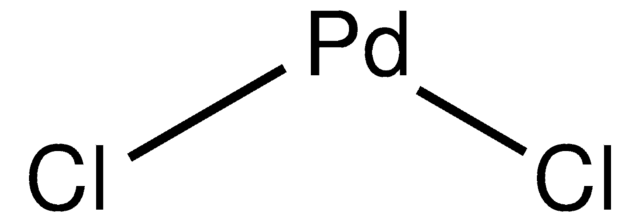520640
Platinum(IV) chloride
≥99.9% trace metals basis
Synonym(s):
Platinum tetrachloride
About This Item
Recommended Products
grade
for analytical purposes
Quality Level
Assay
≥99.9% trace metals basis
form
powder
composition
Pt, 55-58%
reaction suitability
reagent type: catalyst
core: platinum
impurities
≤1000.0 ppm Trace Metal Analysis
mp
370 °C (dec.) (lit.)
density
4.303 g/mL at 25 °C (lit.)
SMILES string
Cl[Pt](Cl)(Cl)Cl
InChI
1S/4ClH.Pt/h4*1H;/q;;;;+4/p-4
InChI key
FBEIPJNQGITEBL-UHFFFAOYSA-J
Looking for similar products? Visit Product Comparison Guide
General description
Application
Platinumnanoparticles can be synthesized by reacting platinum (IV) chloride with Cyanobacteriumin an environmentally friendly method.
It can also be used as a dual catalyst forstereo- and regioselective glycosidations. Due to its ligand-bindingcapacity, platinum (IV) chloridehas an affinity for the glycosyl acceptor hydroxy group and forms the glycosidationproduct in β-configuration. It also enhances nucleophilicity differencesbetween hydroxy groups allowing regioselective glycosidation.
Signal Word
Danger
Hazard Statements
Precautionary Statements
Hazard Classifications
Acute Tox. 3 Oral - Eye Dam. 1 - Resp. Sens. 1 - Skin Corr. 1B - Skin Sens. 1
Storage Class Code
6.1A - Combustible acute toxic Cat. 1 and 2 / very toxic hazardous materials
WGK
WGK 2
Flash Point(F)
Not applicable
Flash Point(C)
Not applicable
Personal Protective Equipment
Choose from one of the most recent versions:
Already Own This Product?
Find documentation for the products that you have recently purchased in the Document Library.
Customers Also Viewed
Our team of scientists has experience in all areas of research including Life Science, Material Science, Chemical Synthesis, Chromatography, Analytical and many others.
Contact Technical Service










